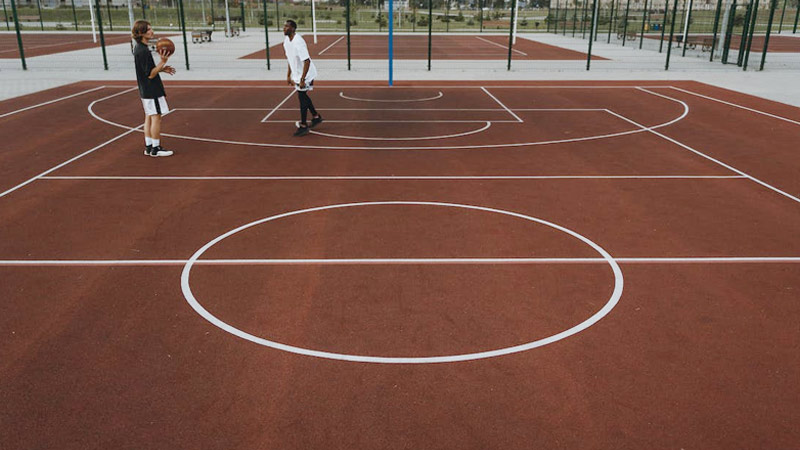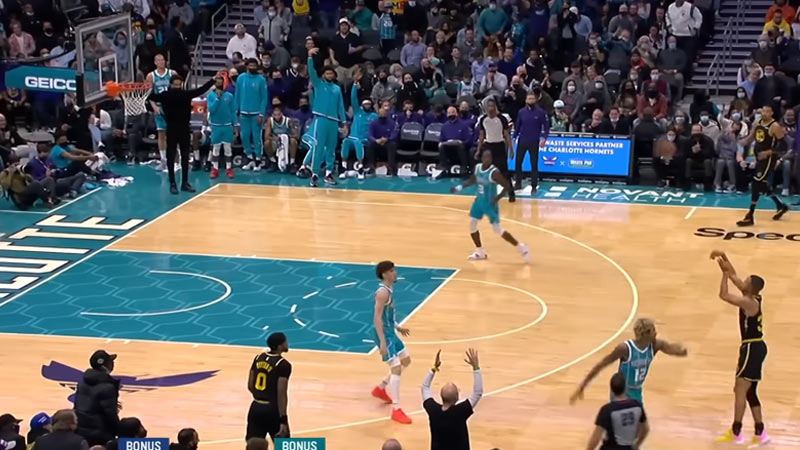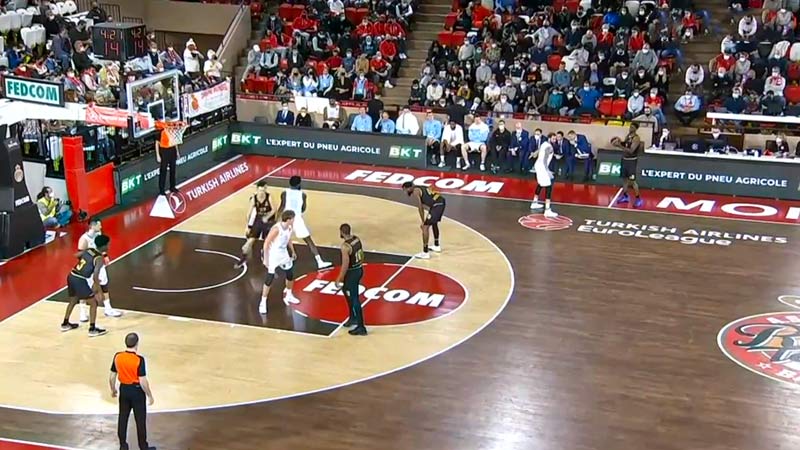In the dynamic world of basketball, the court is divided into various zones that serve strategic purposes for both offensive and defensive play. One crucial area that holds immense significance is the baseline.
The baseline is the boundary line that extends from sideline to sideline behind each basket. The intricacies of the baseline and how it impacts the game are vital for players, coaches, and fans alike.
In this comprehensive article, we will delve into the concept of the baseline in basketball, explore offensive and defensive strategies employed to guard it, examine its utilization in different game situations, discuss baseline violations and penalties, and highlight the overall significance of this area on the court.
By grasping the nuances of the baseline, one can gain a deeper appreciation for the strategic elements of basketball and enhance their understanding of the game. Stay focused.
What Is a Baseline in Basketball?
The baseline in basketball is a fundamental aspect of the court layout, serving as a boundary line that runs parallel to the baseline and extends from sideline to sideline behind each basket.
Also known as the end line, it plays a vital role in the game, influencing offensive and defensive strategies and serving as a reference point for various basketball rules.
One of the primary functions of the baseline is to mark the out-of-bounds area beneath the basket. When a player or the ball crosses this line, it is considered out of bounds, resulting in a turnover and possession being awarded to the opposing team.
The position of the baseline is crucial for players to maintain court awareness and avoid committing turnovers near the basket.
Moreover, the baseline is a strategic element that impacts offensive and defensive play. For the offensive team, the baseline provides opportunities to execute effective plays and scoring chances. Players can utilize the baseline to cut to the basket, make baseline drives, or set up screens for teammates.
What Are the Offensive and Defensive Strategies for Guarding the Baseline?

Guarding the baseline in basketball is a crucial aspect of defensive play. It requires a combination of defensive skills, positioning, and effective communication among teammates.
Defensively, teams employ various strategies to protect the basket and prevent their opponents from exploiting the baseline for easy scoring opportunities.
On the other hand, offensive players use the baseline to their advantage, seeking advantageous positions for scoring, setting screens, or creating open passing lanes.
Let’s delve deeper into the offensive and defensive strategies involved in guarding the baseline.
Defensive Strategies
Check out the defensive strategies in the following section.
Denying Baseline Drives
One of the primary objectives of defending the baseline is to prevent offensive players from driving directly to the basket from the baseline.
Defenders use their positioning and footwork to deny this path and force the offensive player away from the basket.
Funneling to Help Defense
When defending the baseline, defenders aim to guide the offensive player toward their teammates providing help defense in the paint.
By strategically positioning themselves, defenders can discourage baseline drives and force the offensive player to encounter additional defenders near the basket.
Contesting Shots
Defenders guarding the baseline must be ready to contest shots effectively. They need to close out on offensive players quickly, challenge their shots, and disrupt their shooting rhythm. Timing and proper positioning are crucial to contest shots without fouling.
Communication and Switching
Effective communication among defenders is vital when guarding the baseline. Defenders need to communicate switches, rotations, and potential offensive threats to ensure that everyone is on the same page and can react accordingly to different offensive actions near the baseline.
Offensive Strategies
Check out the offensive strategies in the following section.
Exploiting Gaps and Mismatches
Offensively, players can utilize the baseline to exploit gaps in the defense or mismatches against slower or smaller defenders.
By positioning themselves intelligently along the baseline, offensive players can create scoring opportunities for themselves or their teammates.
Setting Screens
The baseline can be an ideal location for setting screens to free up teammates for open shots or drives.
By using the baseline as a point of reference, offensive players can create confusion in the defense and create space for their teammates to exploit.
Creating Passing Lanes
Offensive players can use the baseline to create open passing lanes. By drawing defenders toward the baseline, they can create opportunities to pass the ball to open teammates either on the perimeter or cutting toward the basket.
Utilizing Corner Shots
The corners of the baseline are often prime locations for three-point shots. Offensive players can use the baseline to get into position for corner threes, which can be high-percentage shots if executed properly.
How to Use a Baseline in Basketball?

The baseline in basketball is a boundary line that runs parallel to the end line and forms the outermost edge of the court. It offers unique opportunities for players to exploit and create scoring chances for their team.
How to effectively use the baseline can greatly enhance a player’s offensive capabilities. Let’s explore some of the ways the baseline can be utilized in various offensive scenarios:
Driving to the Basket
The baseline can serve as a launching point for players to drive to the basket. By attacking from the baseline, offensive players can catch their defenders off-guard and have a direct path to the hoop.
This can be particularly effective against opponents who tend to overplay the middle or leave the baseline vulnerable.
Baseline Cuts
Cutting along the baseline is a common offensive strategy used to create scoring opportunities. Players can make sharp cuts from the weak side or the strong side of the court, utilizing screens and off-ball movement to confuse defenders.
Baseline cuts can lead to open layups, backdoor passes, or kick-out opportunities to teammates on the perimeter.
Out-of-Bounds Plays
The baseline is a crucial area for executing out-of-bounds plays. Whether it’s a sideline or baseline inbound, teams often design plays that involve screening along the baseline to free up shooters or create mismatches.
Utilizing screens, off-ball movement, and well-timed cuts can result in high-percentage scoring opportunities.
Spacing and Floor Balance
Strategic positioning along the baseline can create spacing on the court, providing room for players to operate.
By occupying the corners or the short corners of the baseline, offensive players can stretch the defense and open up driving lanes or passing angles for teammates.
This balanced floor spacing can lead to better ball movement and scoring opportunities.
Penetrating the Defense and Offensive Rebounds
Attacking the baseline can be an effective way to penetrate the defense and draw fouls.
By driving aggressively along the baseline, players can force defenders to rotate and make contact, increasing the likelihood of drawing fouls or reaching the free-throw line.
Additionally, the baseline can be advantageous for securing offensive rebounds due to its position near the basket.
Incorporating the baseline effectively into offensive strategies requires players to be aware of their surroundings, anticipate defensive rotations, and make quick decisions.
It’s essential to communicate and collaborate with teammates to exploit the advantages created by the baseline.
Coaches can also design plays and drills that emphasize utilizing the baseline in different game situations to enhance players’ understanding and execution.
Baseline Violations and Penalties
Baseline violations in basketball refer to situations where either a player or the ball crosses or goes out of bounds along the baseline.
These violations can occur during various phases of the game, such as inbounding the ball, shooting attempts, or when players attempt to gain an unfair advantage by running along the baseline.
One common baseline violation is stepping on or over the baseline while inbounding the ball. When a player is responsible for inbound passes from the baseline, they must ensure that their feet remain planted in bounds until the ball is released.
If the player steps on or crosses the boundary line before releasing the ball, it results in a violation, and possession of the ball is awarded to the opposing team.
Another type of baseline violation happens when a player lands out of bounds after attempting a shot. In basketball, a player is allowed to jump from the court, attempt a shot, and return to the court without committing a violation.
However, if a player lands out of bounds or makes contact with any part of the boundary line, it is considered a violation. The opposing team gains possession of the ball.
Running along the baseline to gain an unfair advantage is another form of baseline violation. This occurs when a player moves along the baseline intentionally to gain a better position or to confuse the defense.
Running along the baseline is not allowed, as it disrupts the flow of the game and can create an unfair advantage. If a player is caught running along the baseline, it leads to a violation, and the opposing team is awarded possession.
Penalties for baseline violations vary depending on the specific violation and the level of play (e.g., high school, college, or professional).
In most cases, baseline violations result in turnovers, meaning possession of the ball is awarded to the opposing team. The team that committed the violation loses the opportunity to score or advance the ball.
Additionally, the location of the subsequent inbound pass may change. For example, if a baseline violation occurs during an inbounding situation, the inbounder may be required to inbound the ball from a different spot along the baseline or sideline.
Significance of the Baseline in Basketball
The baseline holds significant strategic value in basketball. It serves as a boundary for offensive and defensive positioning, influences shot selection, impacts offensive spacing, and plays a role in out-of-bounds plays.
The baseline also affects defensive rotations, as guarding the baseline requires defenders to make quick decisions and communicate effectively.
The significance of the baseline allows players and coaches to exploit its advantages and defend against potential threats effectively.
FAQs
Can offensive players stand out of bounds behind the baseline?
No, offensive players must establish legal positions within the boundaries of the court. Standing out of bounds behind the baseline results in a violation and turnover.
What is the purpose of the restricted area under the basket near the baseline?
The restricted area, also known as the “paint” or “key,” is located under the basket near the baseline. Its purpose is to protect the offense by limiting the time defenders can spend in the area, preventing them from camping in the lane and impeding offensive drives.
Are players allowed to save the ball from going out of bounds by jumping from behind the baseline?
Yes, players can save the ball from going out of bounds by jumping from behind the baseline as long as they release the ball before landing out of bounds.
However, if they possess the ball while airborne and land out of bounds, it results in a turnover.
Are there specific offensive plays designed to utilize the baseline?
Yes, there are various offensive plays that utilize the baseline. These include baseline cuts, where a player quickly cuts along the baseline to receive a pass near the basket, and baseline screens, where a player sets a screen along the baseline to free up a teammate for a scoring opportunity.
Can defensive players block shots from behind the baseline?
Defensive players are allowed to block shots from behind the baseline as long as they do not make contact with the offensive player’s body or hit the backboard before making the block.
It requires precise timing and athleticism to execute a successful block from this position.
Bottom Line
The baseline in basketball is a significant area on the court that influences offensive and defensive strategies, shot selection, and overall gameplay.
It serves as a boundary for out-of-bounds plays, impacts spacing, and allows players to create scoring opportunities.
The intricacies of the baseline are crucial for players, coaches, and fans, as it provides valuable insights into the strategic elements of the game.
By utilizing the baseline effectively and guarding it diligently, teams can gain a competitive edge and maximize their chances of success on the basketball court. Thank you for your time.







